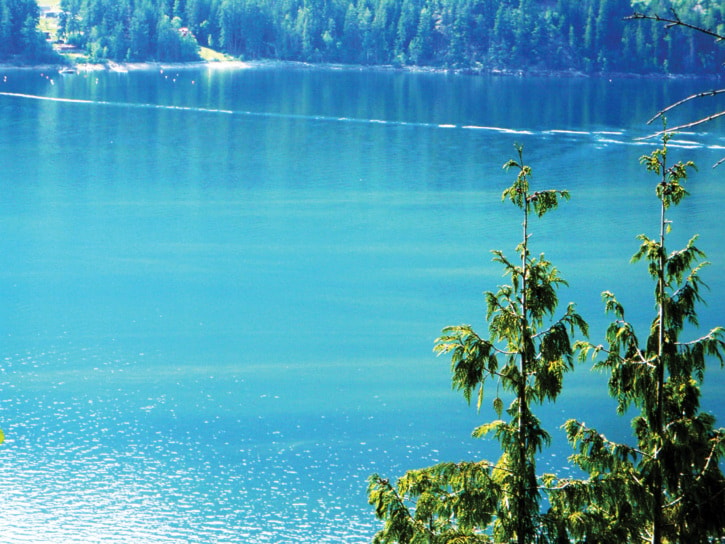Updated at 10:48 a.m. Wednesday, May 27
The Ministry of Environment is investigating reports of algae blooms in Shuswap and Mara lakes.
Reports of a yellow-brown substance in Mara Lake began to surface last Thursday.
On Friday, May 22, Salmon Arm biologist Jeremy Ayotte said he and five others were on a canoe excursion, paddling along the east side of Shuswap Lake toward Anstey Arm, when they encountered a “yellow-orange mat of algae hovering about a metre below the surface.”
“It was patchy in places, sometimes wispy and thin,” Ayotte explained in an email. “In other places it appeared to be a solid mass. There was no smell, but it also didn’t appear to break the surface of the lake.”
The Ministry of Environment received word of the bloom on Friday. Ministry spokesperson David Karn said in an email Tuesday, May 26, that the ministry's water quality section staff were aware of the bloom and were "monitoring the situation by reviewing water-quality monitoring information," and were also in contact with Interior Health.
Ayotte said last week’s weather and lake conditions – unusually warm temperatures and calm waters – were conducive to algae blooms, as seen in Shuswap Lake in 2008, and in Shuswap and Mara lakes in 2010. On his return trip Sunday, with the cooler temperatures and heavy rains, he said he could no longer see any signs of what he saw Friday.
Ministry staff have found pockets of ochromonas, a single-celled algae most common in spring and in nutrient-poor waters, they haven't found anything amounting to the blooms of previous years. They are also finding a lot of pollen on the lakes right now which, when it sinks into the water, can look like algae.
From what he saw Friday, however, Ayotte stressed the need for better management of the Shuswap watershed
Shuswap Environmental Action Society president Jim Cooperman agrees, calling for an active Shuswap Wateshed CouncilShuswap Watershed Council, as well as point-source monitoring of suspected nutrient sources, specifically agricultural operations along the Shuswap River.
“They’ve identified nutrient spikes in the river and in Mara Lake, but they can’t tell you where it comes from," said Cooperman. "The point-source monitoring will tell you the source of the nutrients.”
Columbia Shuswap Regional District Area C South Shuswap director and watershed council chair, Paul Demenok, called news of the recent bloom “distressing,” and said the council – comprised of local and regional governments, First Nations and B.C. government agencies – would have to “redouble our efforts with monitoring and mitigation plans.”
But Demenok adds the council is still in the process of establishing the sustained funding needed to focus on problems like this. As for determining nutrient sources, he said that would be one of the goals of the council’s five-year plan.
“There have been suggestions the sources are agricultural," said Demenok. "We still need to confirm that, we still need to do the science that points to the sources of phosphorous in the Shuswap, Salmon and Eagle rivers.”
Cooperman says all governments that rely on the Shuswap watershed should take heed of the bloom and support the watershed council in moving ahead.
“The entire region is dependent on the health of the lake,” said Cooperman. “If we let it go downhill, and we get more algae blooms year after year, it may decrease visitation and affect the whole economy.”
